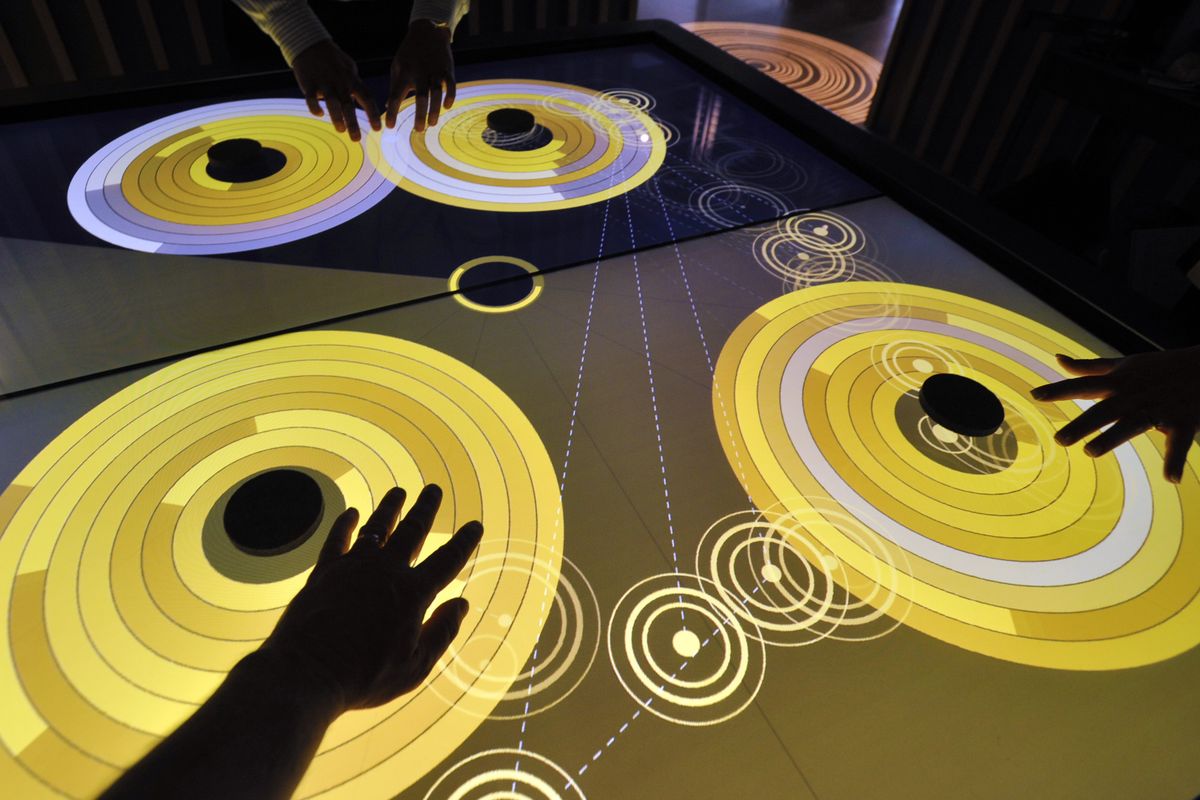Science at the region’s fingertips
Mobius center’s Friday opening promises to boost Spokane’s imagination quotient

The long-awaited Mobius Science Center opens Friday in downtown Spokane, offering a science playground for nearly all ages.
The 65 featured exhibits in the 27,000-square-foot space are designed to achieve the center’s motto: “Sparking curiosity, igniting imagination.”
“Everything is a learning experience,” said Marty Gonzales, chief operations officer. “We just package it in an exciting and clever way.”
A drive to build a local science center has been in the works for more than a decade. Mobius, a nonprofit community organization, was founded in 2005.
For several years, the plan was to locate a science center on the north bank of the Spokane River. The group had negotiated with the Spokane Park Board to build a 45,000-square-foot center near Washington Street and Cataldo Avenue. But that project stalled over fundraising, lease arrangements and a recession, among other obstacles.
In 2010, the Mobius board shifted the location to the former J.C. Penney building at Main Avenue and Lincoln Street. The building is owned by Cowles Co., owner of The Spokesman-Review.
After two years of renovation and innovation, and a cost of about $12 million – a combination of fundraising, grants, state funding and donations – the center is finally a reality, Gonzales said.
Chris Majer, Mobius’ chief executive officer, said, “If you’d told me when I started this thing that it was going to take this long … well, it’s been a journey. This is the end of phase one and the beginning of phase two: How do we make it an integral part of the community?”
But for now, it’s all about welcoming the community into the new center.
Gonzales said the science center fills a need in Spokane and also reflects a national emphasis on science, technology, engineering and mathematics education, or STEM.
“Mobius is part of the solution,” Gonzales said. “We are not here to replace the schools. We’re here to supplement it.”
The center is divided into eight sections: Engineering and Flight, Bio Lab, Human Body, Fluid Dynamics, Sound Cube, Space, Experimental Lab, and Physics and Phenomena.
The exhibits include:
• Mindball – Visitors strap on headbands with three metal EEG readers and use brain waves to move a ball back and forth between them.
• Jump Time – A high-speed digital camera captures a person’s movements as he or she leaps into the air against a backdrop of silhouettes and height indicators. Visitors can enter their jump heights to see how they compare with Hoopfest winners, NBA stars, insects and animals.
• Anatomy Visualization – A giant iPad shows a clothed body, and by moving the cursor the user pulls back layers to show skin, muscles, organs and gases inside the human body.
“This is something you won’t find anywhere else in the country,” Gonzales said.
• Hydroelectric Power – A model using water and air pressure in a giant tube shows how water power is converted into electricity.
• Circle of Fifths – A large digital touch table lets people play with and manipulate musical chords arranged in a circle.
• Ball Drops – A wall incorporates various moveable materials, such as plastic tubes, metal wheels and Plexiglas boxes, to guide a ball through a maze.
The new museum also will offer classes in topics such as robotics.
“We like to think of ourselves as an excitement center,” Majer said. “The part of science kids get excited about is experiencing it.”
After the newness fades, the focus will shift to making the center more sustainable.
Recently, for example, Majer learned a science center is pretty high on the list of popular tourist activities.
Visit Spokane, formerly the Spokane Regional Convention and Visitors Bureau, found that the top interests of potential visitors to Spokane are outdoor-oriented getaways and a science center. Majer said there are no other science centers between Spokane and Minneapolis.
What’s more, the center’s market studies estimate that it will draw 20,000 to 30,000 overnight visitors annually from the region.
Keeping the exhibits fresh by rotating them will be key, officials said.
To ensure there’s a full range of science activities for all ages, Mobius is also updating Mobius Kids Children’s Museum in the basement of River Park Square.
On Sept. 8, there will be a grand opening celebration for both Mobius museums.
For now, Mobius officials are focused on Friday’s opening.
Said Gonzales: “We are excited to bring this to the families of Spokane.”